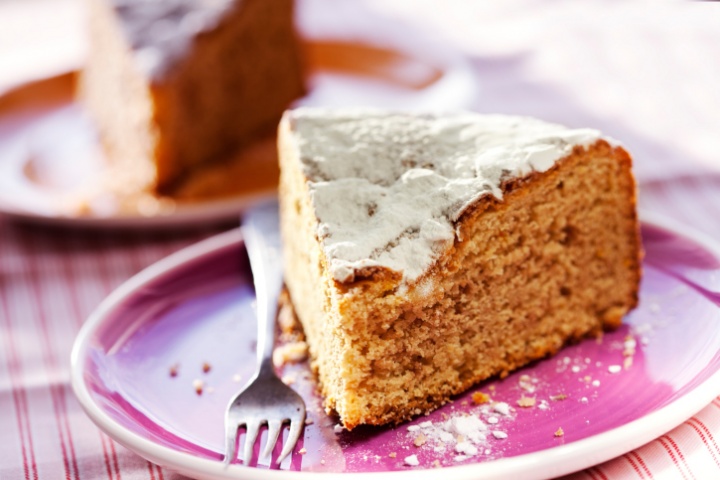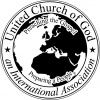What is leaven?

Looking for leavening
Leaven includes yeast, a biological leavening agent that produces fermentation, and chemical leavening agents such as baking powder, baking soda (sodium bicarbonate), and potassium bicarbonate.
Items such as bread, cake, crackers, cookies and prepared cereals and pies that contain leavening must be put out. Doing this is symbolic of putting both the visible and hidden sins out of our lives.
Homemade cream puffs, angel food cake, popovers and sponge cake, while light and fluffy, need not contain any of the above ingredients. Most pie crust recipes (except for graham cracker crusts) are unleavened. However, these products, when purchased from stores or bakeries, frequently do include leavening. Check the ingredient list.
Even though pita bread, flour tortillas and graham crackers are flat, they do contain leavening. Even some brands of matzos marked "kosher for Passover" can also list baking soda or baking powder in the ingredients! So be careful.
Although the following ingredients are associated with leavening products; they are not, by themselves, leavening agents: brewer’s yeast, yeast extract (a flavoring), cornstarch and cream of tartar (a dry acid). Cream of tartar, being an acid, merely neutralizes the alkaline nature of baking soda and does not, by itself, cause dough to rise.
Leavening Agents
Leaven is any agent that produces fermentation and causes dough to rise, by causing the formation of carbon dioxide gas to bubble into and spread throughout the dough. This is accomplished either chemically (as with baking soda) or biologically (as with yeast).
• Baking Soda: a crystalline alkaline salt that gives off gas when an acid is added. The following are different types of baking soda:
• Sodium bicarbonate, also known as “Saleratus.”
• Potassium bicarbonate, or potash.
• Ammonium carbonate, or “baker’s ammonia.”
• Ammonium bicarbonate, also known as “hartshorn.”
• Baking Powder (baking soda + acid-forming ingredients + starch filler).
• Sourdough starter (a wild yeast colony that is maintained with flour and moisture).
• Yeast (a single-celled fungi, used to leaven).
Not Leavening
• Autolyzed yeast: A yeast that has ‘self-destructed’ and is sterile – incapable of leavening.
• Brewers Yeast: A dead form of yeast that cannot leaven bread; a ‘nutritional’ yeast.
• Torula Yeast: A dead yeast that cannot leaven bread, considered a ‘nutritional’ yeast. Also hickory smoked torula yeast. Used as a savory seasoning that imparts smoky aroma to foods.
• Yeast extract(s): Derivatives of yeast, which are sterile and cannot leaven bread.
• Cream of Tartar: Tartaric acid – potassium bitartrate or potassium hydrogen tartrate. This is an acid used to combine with baking soda. By itself, this is not leavening.
• Tartrate powder: Phosphate powder or sulfate powder – usually added with cream of tartar. By itself this is not leavening.
• Alum: A metallic double salt, usually added with cream of tartar. Most common is sodium aluminum sulfate (SAS or sulfate powder), and potassium aluminum sulfate (or potash alum). By itself this is not leavening.
• Sorbitan monosterate: A flavor and texture enhancer. Not leaven of itself.
• Sodium Caseinate: A milk protein, not a leaven
• Sodium Silicoaluminate: A fine powder that is used to keep cocoa, salt and other products dry, not a leaven
• Polysorbate 60: A preservative; not a leaven.
• Egg whites: Not a leavening agent. While beaten egg white can be stirred into dough, it does not spread through dough as leavening does and is not leavening.
• Steam or air (such as in popovers or angel food cake). The same principle as egg whites (above) applies; there is no leavening agent mixed through the dough.
Nonfood Leaven
Should I remove nonfood products that contain leavening from my home during the Days of Unleavened Bread?
The Bible tells us that during the Days of Unleavened Bread we remove leaven and leavened products from our homes (Exodus 12:15; Exodus 12:19; Exodus 13:7). Leaven is a food additive, which causes bread or bread products to rise. Symbolically, this represents removing visible and hidden sins out of our lives. Since leaven puffs up dough, we’re given an object lesson about hypocrisy and pride.
Leavening agents are also found in many items other than breads. Toothpaste, carpet deodorizer, beer, body powders, antacids, dog and cat food, and some medicines to name a few. Even class C fire extinguishers contain forms of leavening agents! Must all of these items be removed during Unleavened Bread? No, these need not be discarded.
We are commanded to celebrate the Days of Unleavened “Bread.” This helps us realize it refers to items such as bread, crackers, cookies, cake, cereals, and pies that contain leavening that are to be put out. Whatever foods that contain a biological leavening agent that produces fermentation or a chemical leavening agent such as baking powder, sodium bicarbonate, and potassium bicarbonate must be removed.
When leaven is found in nonfood products, even though they need not be discarded, it becomes a matter of personal conscience between the individual and God as to whether the product should be removed. If having these types of products in your home during the Days of Unleavened Bread defiles your conscience, then it is better dispose of them during the Festival (Romans 14:23).
What does leaven picture during the Feast of Unleavened Bread?
During the Days of Unleavened Bread we are to have no leaven or leavened products in our home (Exodus 12:15; Exodus 12:19; Exodus 13:7). Leaven is a food additive, which causes bread or bread products to rise. The apostle Paul used this property of leaven to teach Christians that a “puffed up” attitude is sin (compare 1 Corinthians 5:2 with 1 Corinthians 5:6-7).
Leaven pictures sin. It is compared with malice (wrong motives) and wickedness (breaking God's law). Since leaven puffs up bread, it provides an object lesson about pride and hypocrisy. And Jesus Christ used it as an analogy of the wrong teachings (doctrines) of the Pharisees that had been derived by human reasoning, yet were given more importance than the actual laws of God. Jesus gave several examples of these human traditions of His day (Mark 7:1-13), and by implication Christians must be careful not to follow teachings today that stray from the Bible (1 Corinthians 5:8; Luke 12:1; Matthew 16:11-12).
What spiritual lessons can we learn by removing leavening from our homes?
Like leaven, sin easily grows, spreads and can permeate our lives. Putting out leavening from our homes is symbolic of putting both the visible and hidden sins out of our lives. Christians come to realize that we can't do this on our own. We need to examine ourselves and repent and strive to change, but it is Jesus Christ's help, as we submit to Him living in us, that produces true spiritual progress (1 Corinthians 5:6-8; 2 Corinthians 13:5; Ephesians 4:22-24).
What spiritual lessons can we learn by eating unleavened bread?
Jesus Christ living in us helps us overcome and remove sins, and Christ in us also helps us develop His positive character. Eating unleavened bread is symbolic of feeding on every word of God, and becoming like Jesus, the bread of life (Matthew 4:4; John 6:35).
Submitting to our Savior and Deliverer is the only appropriate response to His incredible sacrifice and love. An appreciative, forgiven Christian will seek Christ's help to not repeat the sins that earned that death penalty.
The Feast of Unleavened Bread is a reminder of our deliverance from slavery to sin and of the transformation we can have by allowing our Deliverer to live in us.
If you would like to make some unleavened bread to eat during the Days of Unleavened Bread check out the unleavened recipes available on the website.
